Sony RX10 vs Sony RX10 II vs Sony RX10 III vs Sony RX10 IV: Specs compared
How do the successive iterations of Sony’s popular RX10 Cyber-Shot compact super zoom bridge camera stack up when compared and contrasted?
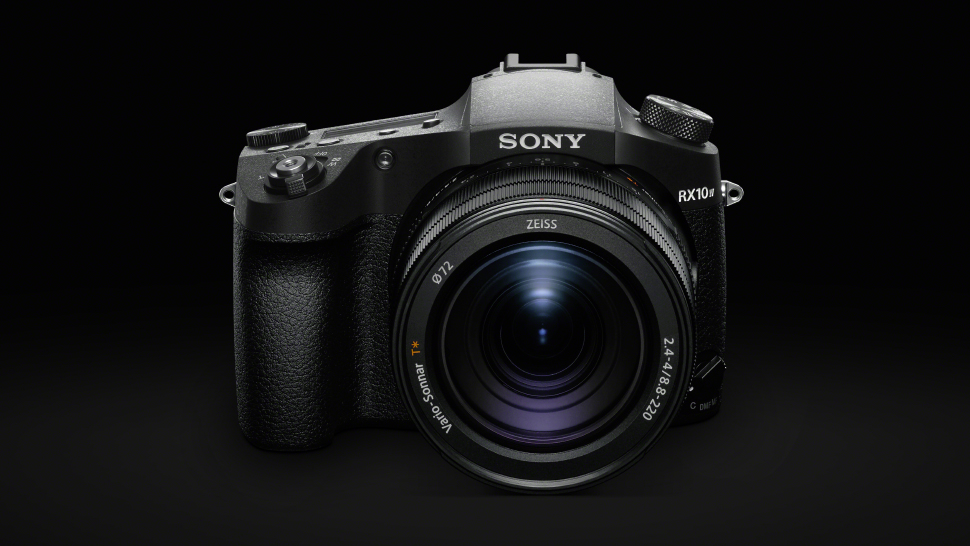
Amazingly – and unusually – all four generations of Sony’s acclaimed enthusiast RX10 premium compact are still on sale, with the older models occasionally popping up as part of various money-saving cashback offers, or as subject to price reductions, in order to further entice photographers and videographers.
With the RX10 then, it seems Sony arrived at a winning formula, inserting a larger than average one inch sized sensor into a robust bridge camera class body, complete with a decent (and, over successive generations, gradually increasing) zoom range.
This is not to be confused with the RX100 series, currently topped by the Sony RX100 VII. These are much smaller compact cameras completely unlike these RX10 megazooms.
However, as this was launched as very much a model for enthusiasts and a hugely capable one at that, it’s inevitably not the cheapest of options. Even the original Cybershot RX10 from way back in 2013 still represents a serious investment to most people.
With this in mind, we thought it worth comparing and contrasting their differences and similarities of the RX10 differing generations, the various features that have come and gone, the ones that have been retained plus the ones that have been added, to help you make an informed buying decision if the Sony RX10 or one of its newer variants is the camera you have in mind. Read on to find out more…
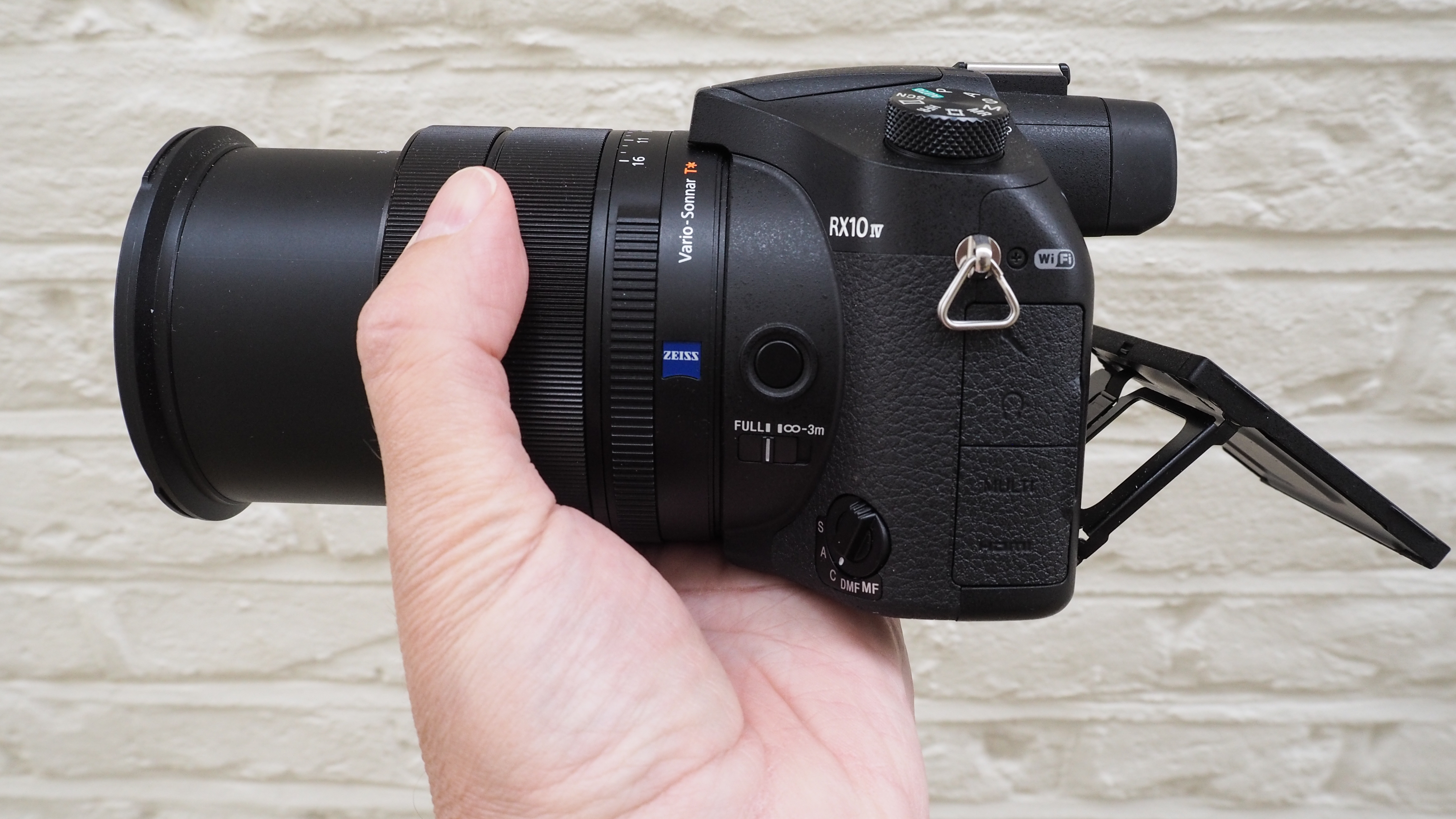
Sensor and processor
Sony RX10 vs RX10 II vs RX10 III vs RX10 IV: Sensor and processor
Why you can trust Digital Camera World
• Sony RX10: 1.0-inch Exmor R sensor, 20.2 effective megapixels
• Sony RX10 II: 1.0-inch stacked Exmor RS CMOS sensor with DRAM chip, 20.2 effective megapixels
• Sony RX10 III: 1.0-inch stacked Exmor RS CMOS sensor with DRAM chip, 20.1 effective megapixels
• Sony RX10 IV: 1.0-inch stacked Exmor RS CMOS sensor with DRAM chip, 20.1 effective megapixels
Obviously a key point to make here is that Sony not only makes the sensors incorporated in its own cameras, it makes most of the sensors that are deployed by photography’s equally big name brands – a sign of the high regard in which its technological expertise is held.
Since most other bridge cameras at the time employed a 1/1.7-inch sensor, the larger one-inch sensor at the RX10’s heart put the original model at the top of its class upon launch in 2013.
From the start this was intended as a premium product for photographers and videographers. This chip was twinned with an equally new at-the-time Bionz X processor, promising speeds three times faster than its predecessor.
Having arrived at a winning formula, the same size sensor – but one that now had a DRAM memory chip attached, allowing for a claimed 5x quicker readout – was also implemented by the RX10 Mark II.
This second iteration maintained its predecessor’s headline effective resolution of 20.2 effective megapixels, and excellent across-the-board results.
The same Exmor RS sensor is utilised in the third generation RX10 III, but here Sony give the effective resolution as 20.1 effective megapixels. Again the default image aspect ratio is 3:2 as it is for all Sony options.
As we move into the fourth and most recent iteration of the RX10, nothing has outwardly changed and again we get the same size and iteration of sensor with the same effective resolution.
However, this latest model saw the arrival of on-sensor phase detection autofocus, with a total of 315 phase detection points covering 65% of the frame.
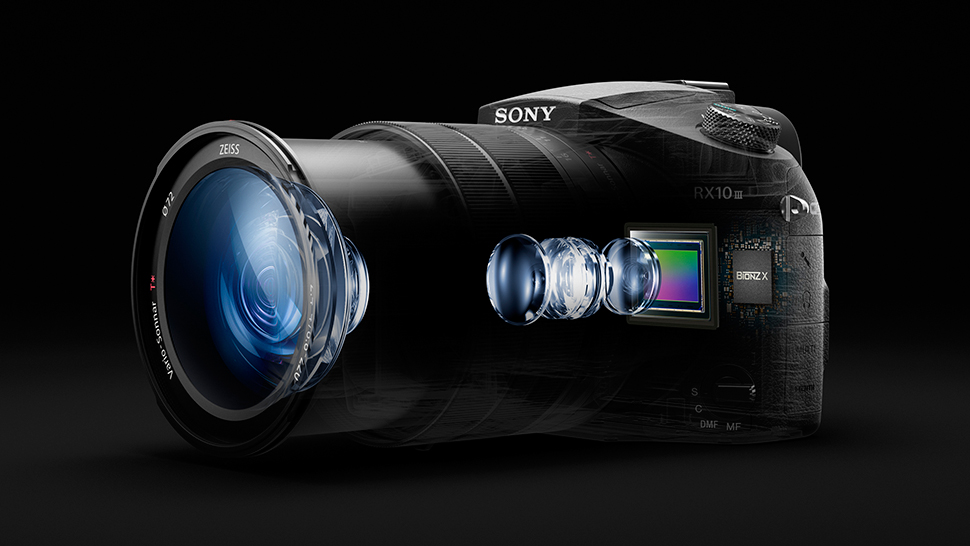
Lens
Sony RX10 vs RX10 II vs RX10 III vs RX10 IV: Lens
• Sony RX10: Zeiss Vario Sonnar T* lens, 8.3x optical zoom (24-200mm focal range, 35mm equivalent), f/2.8 constant aperture
• Sony RX10 II: Zeiss Vario Sonnar T* lens, 8.3x optical zoom (24-200mm focal range, 35mm equivalent), f/2.8 constant aperture
• Sony RX10 III: Zeiss Vario Sonnar T* lens, 25x optical zoom (24-600mm focal range, 35mm equivalent), f/2.4-4 aperture range
• Sony RX10 IV: Zeiss Vario Sonnar T* lens, 25x optical zoom (24-600mm focal range, 35mm equivalent), f/2.4-4 aperture range
Sensor aside, lens capability is at the forefront of the appeal of all iterations of the RX10.
Case in point, Zeiss lens technology, plus an 8.3x optical zoom range offering a constant f/2.8 aperture across its entirety, are chief features of the original RX10, on which minimum focus length is a mere 3cm.
Though the constant aperture was a nice touch, this wasn’t a mammoth range when compared to competing bridge cameras at the time that, admittedly, were either cheaper or had smaller sensors.
That said, the RX10 Mark II that succeeded it kept its forbear’s core focal range of an ultra wide angle 24-20mm equivalent in 35mm terms, plus the same maximum f/2.8 aperture throughout. Hey, if it ain’t broke, don’t fix it, right?
Things changed however with the RX10 III, which boosted the equivalent focal range to 24-600mm, at f/2.4-4 aperture, translating as a more generous 25x optical zoom.
More is not always better if course, as this can often translate to image shake at longer focal lengths, especially if the camera is being hand held.
It has also slightly increased the weight and bulk of the Mark III, when compared to its two predecessors, as we’ll see later.
Once Sony had arrived at this wide angle lens behemoth it stuck with it for the fourth RX10 IV iteration, meaning that this model features the same generous focal range and maximum f/2.4 aperture as its predecessor.
However, the performance of the fourth generation unit has been improved with it, as we’ll discover.
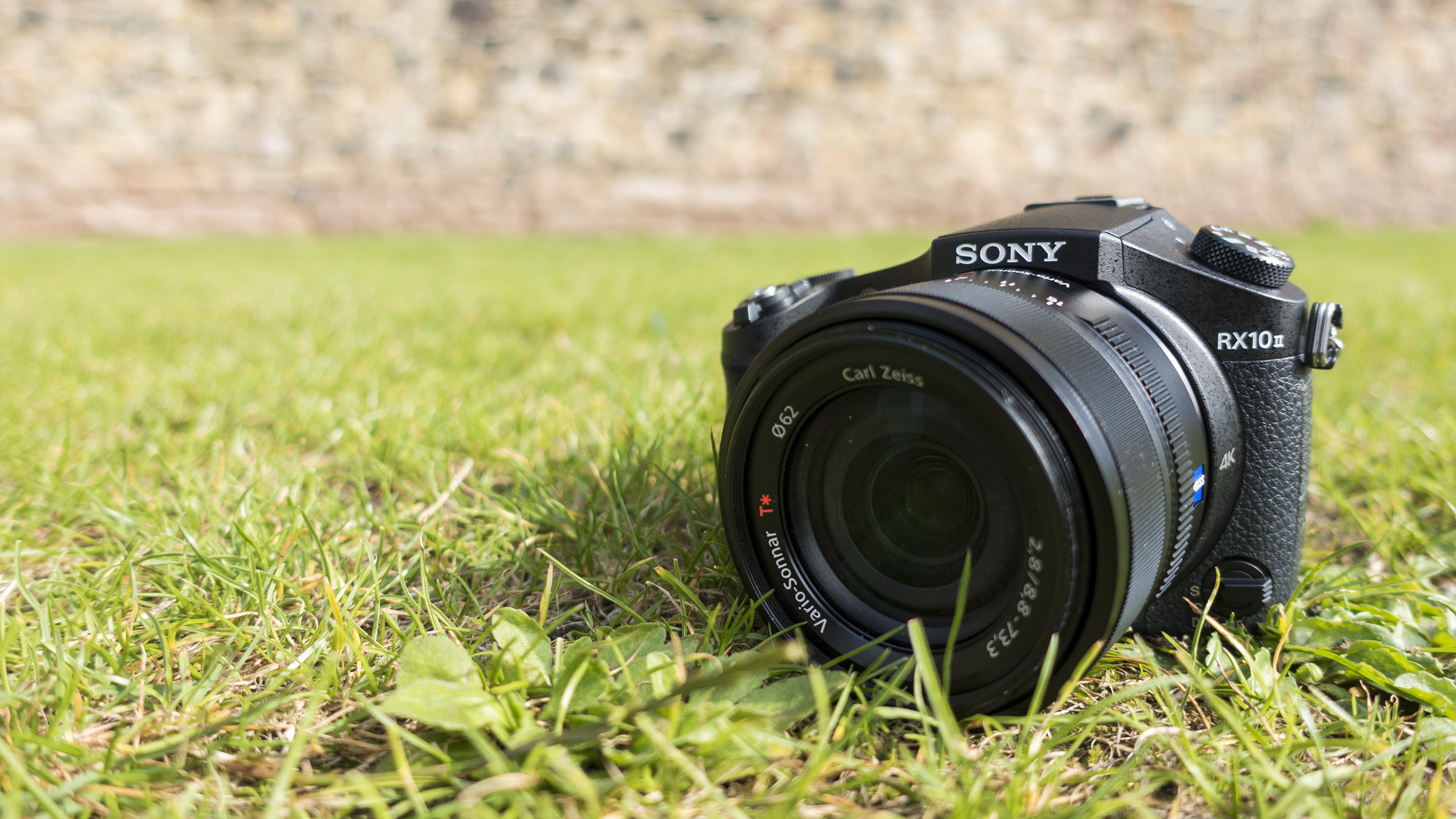
Video
Sony RX10 vs RX10 II vs RX10 III vs RX10 IV: Video
• Sony RX10: Full HD (1920x1080) at up to 60fps
• Sony RX10 II: 4K video (3840x2160) at up to 30fps
• Sony RX10 III: 4K video (3840x2160) at up to 30fps, or Full HD (1920x1080) at up to 120fps
• Sony RX10 IV: 4K video (3840x2160) at up to 30fps, or Full HD (1920x1080) at up to 120fps
The original RX10 offered Full HD video shooting capability in AVCHD recording format, plus the ability to add an accessory microphone, if desired, for more professional sound to accompany it.
The RX10 Mark II upgraded the camera’s video capability to add the now-expected 4K resolution, perhaps reason alone for some to upgrade, plus up to 40x slow motion footage (captured at up to 960fps), if required.
A DRAM memory chip, attached to the sensor itself, part facilitates such features when compared with the original RX10.
The second generation of the camera can also commendably shoot moving footage for 29 minutes and 59 seconds at a time.
The 4K resolution video expectedly continues into the third and fourth generation of the camera, aptly enough, which continue to deploy Fast Hybrid AF for more speedy and accurate focus.
This increased (now industry standard) resolution enables 8MP images to be extracted from 4K video bursts, an idea pioneered by rival Panasonic.
The Sony can deftly handle mixed or contrast-y light conditions too when shooting video, without being put off its stride.
Sony says that on the RX10 IV, focusing speeds twice as fast as the RX10 III are offered, which may well give it the edge for videographers over previous iterations of the camera.
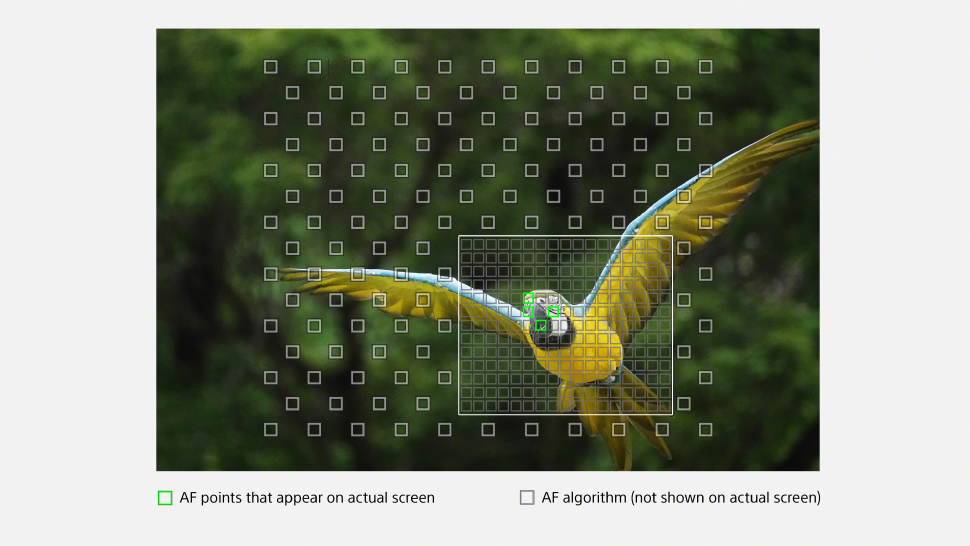
AF system
Sony RX10 vs RX10 II vs RX10 III vs RX10 IV: AF system
• Sony RX10: Not given
• Sony RX10 II: Fast Intelligent AF, offering 0.09s AF speed
• Sony RX10 III: Fast Intelligent AF, offering 0.09s AF speed
• Sony RX10 IV: 315-point phase detection AF, 0.03s AF speed
The original RX10 super zoom/ bridge camera featured smooth high speed AF thanks to the built in Direct Drive SSM (Super Sonicwave Motor), along with flexible focus area selection, lock-on AF and a new Eye AF function, which detected and focused on a subject’s eyes.
We found the fact that there was no super quick way to change the camera’s AF in flexible spot mode a little frustrating however, and so, because of such tediousness, tended to leave it centre of frame and simply focus and then re-frame most of the time.
On the Sony RX10 II, the camera’s Fast AF system works well, enabling very swift and generally accurate focus acquisition.
While in darker conditions the camera’s AF can hunt around for more than the usual quoted 0.09 seconds, in natural light the camera’s rapid response AF system struts its stuff.
On the RX10 III we found the AF to be a little sluggish in dimmer conditions, though overall for us this wasn’t a deal breaker. In fact, it’s one of the camera’s very few (not quite) negatives.
Matters improved slightly by the fourth generation of the camera however, in that the RX10 IV can focus in 0.03 seconds and deliver continuous burst shooting speeds up to 24fps, which isn’t to be sniffed at.
This is no doubt due to the arrival of on-sensor phase detection autofocus, with a total of 315 phase detection points covering a generous 65% of the frame.
We’re glad to see Sony pushing the envelope here on the RX10 IV when it had largely just maintained the status quo, in terms of AF performance, over the previous three generations of the camera.
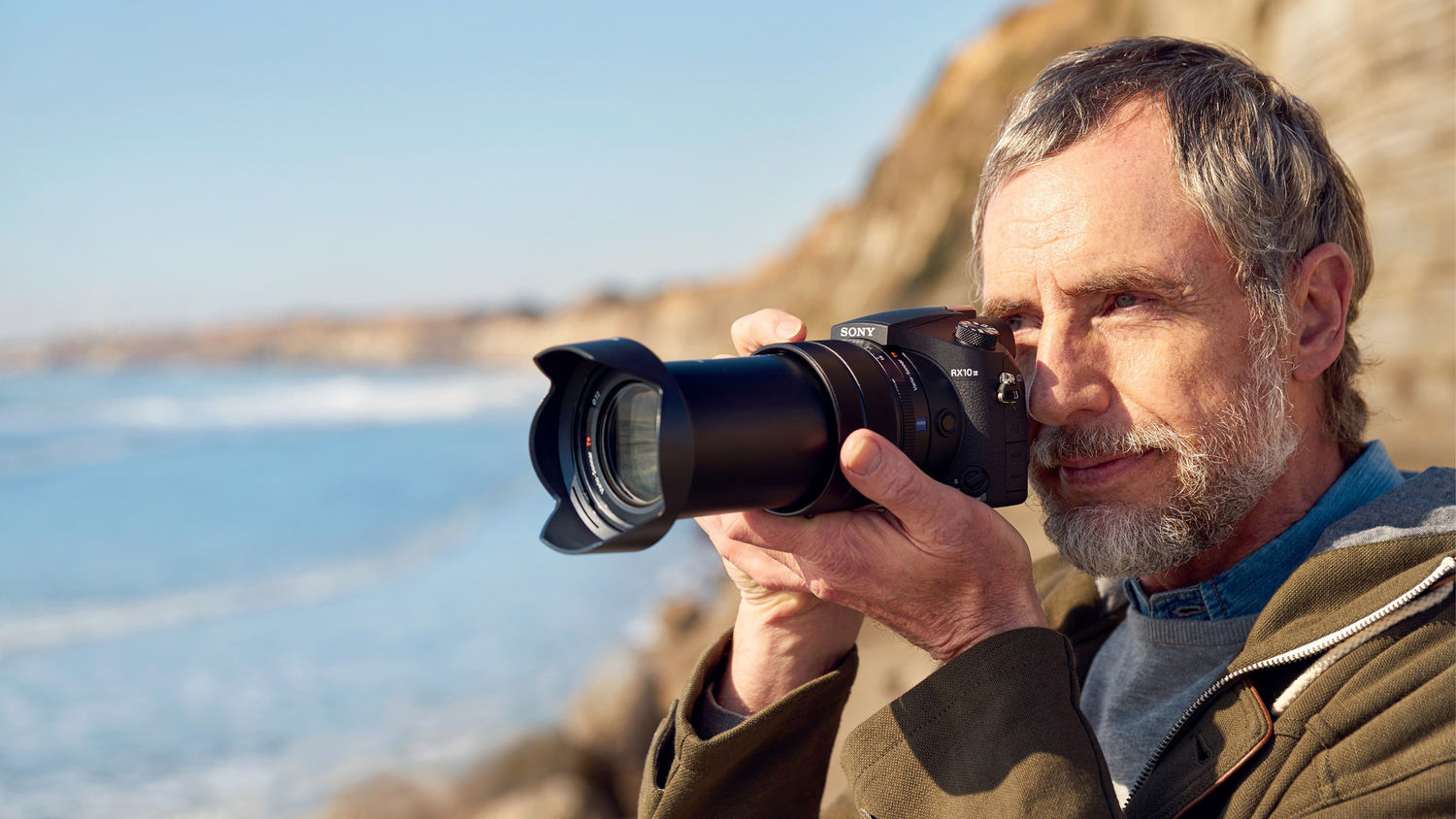
Burst shooting
Sony RX10 vs RX10 II vs RX10 III vs RX10 IV: Burst shooting (FPS)
• Sony RX10: Up to 10fps for up to 10 shots
• Sony RX10 II: Up to 14fps maximum, or 5fps
• Sony RX10 III: Up to 14fps with Speed Priority Continuous Shooting, otherwise 5fps
• Sony RX10 IV: Up to 24fps continuous shooting
The original Sony RX10 features a Bionz X image processor in part delivers high-speed processing that makes continuous capture speeds of up to 10fps achievable on the camera, while the RX10 Mark II nudges this up to 14fps, with a further alternative option to slow things down to 5fps if desired.
The RX10 III offers up a very useful 14fps in Speed Priority Continuous Shooting mode; otherwise maximum speed is 5fps.
By the fourth generation of the RX IV the camera is really earning its keep and cooking on gas, however, managing up to 24fps continuous shooting for up to 249 shots.
This is, commendably, with full autofocus and auto exposure functionality active too. The other two burst mode shooting options on this model are either 10fps or 3.5 fps.
So if it’s speed you feel the need for – perhaps for photographing action or wildlife – then, even though the RX10 III’s 14fps burst shooting was impressive at the time, the Mark IV model has the clear advantage over its predecessors.
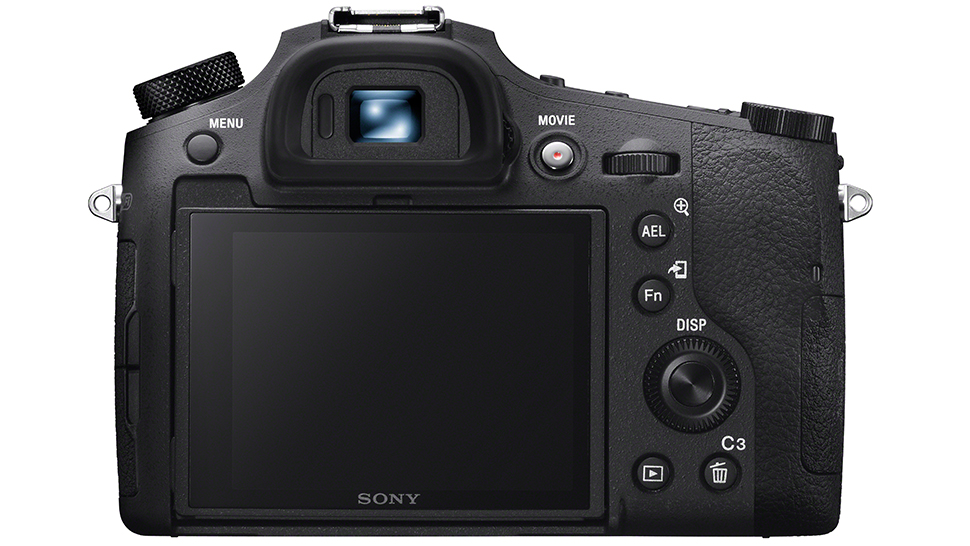
Viewfinder & LCD
Sony RX10 vs RX10 II vs RX10 III vs RX10 IV: Viewfinder and LCD
• Sony RX10: 0.39-inch type electronic viewfinder, plus 3-inch, 1,440,000-dot LCD
• Sony RX10 II: 0.39-inch type electronic viewfinder, 2,359,296-dot resolution, plus 3-inch, 1,228,800-dot resolution LCD
• Sony RX10 III: 0.39-inch type electronic viewfinder, 2,359,296-dot resolution, plus 3-inch, 1,228,800-dot resolution LCD
• Sony RX10 IV: 0.39-inch type electronic viewfinder, 2,359,296-dot resolution, plus 3-inch, 1,440,000-dot resolution LCD
On the RX10 and its successor the photographer/videographer has the choice of shooting with either eye level with the camera’s eye level viewfinder or via the LCD screen on the rear plate, which provides a large and clear life-like display equivalent to 1,440,000 dots.
On the original RX10 this was not a touchscreen however, even though it was helpfully of the tilting variety.
That said, it was not fully articulated, by which we mean able to tilt through 180°. However, by way of compensation, we also get a useful mini LED window on the camera top plate for reviewing key settings, as one would fine on professional grade DSLRs.
While the dimensions of the Sony’s eyepiece and rear screen remain the same across the successive generations, oddly, according to the manufacturer’s given specifications, the LCD resolution dips slightly to 1,228K dots for the second and third iterations of the RX10, before reverting back to the full 1,440,000-dot resolution of the original RX10 for its fourth outing.
It has to be said that the quality of the camera’s eye level electronic viewfinder is stunningly life-like from the second iteration onward, where it increased from 1,440k dots to 2,359K dots.
On the RX10 II again, though, the backplate LCD is neither fully articulated nor a touchscreen, which, while of course workable, felt like a missed opportunity.
That opportunity wasn’t taken up by the third generation of the camera either – no third time lucky for those who like the best of both worlds solutions of physical controls, plus a touchscreen.
However, both size and resolution of electronic viewfinder and LCD are maintained on the RX10 III, with an eye sensor aiding and abetting the user when switching between the two to either frame or review their given subject.
Like it seemingly has when it comes to AF performance, Sony does appear to have listened by the time we get around the RX10 IV, in that the 3-inch tilting LCD has been revised with, finally, the addition of touch functionality.
This has allowed the likes of Touch Focus to be offered, for example. It all increases the creative flexibility of a camera that was fairly creative to begin with, even if slightly frustratingly the touch control doesn’t extend to being able to navigate the camera’s menus.

Build & design
Sony RX10 vs RX10 II vs RX10 III vs RX10 IV: Build and design
•Sony RX10: Weighs 813g with battery and card included; dimensions of 129x88.1x120.6mm
• Sony RX10 II: Weighs 813g with battery and card; dimensions of 129x88.11x120.6mm
• Sony RX10 III: Weighs 1,095g with battery and card included; dimensions of 132.5x94x145mm
• Sony RX10 IV: Weighs 1,095g with battery and card included; dimensions of 132.5x94x145mm
Not a camera to be slipped into the pocket of your jeans from the outset, the shrunken DSLR-like design of the RX10 and its sequels is what we’d expect given the price tag and feature set and could be confidently described as ‘robust’ thanks to its large chunky grip and rubberised coating.
The RX10 and its Mark II version are very much peas in the same pod when it comes to design. What has changed instead between generations is the interior specifications.
The broader focal range of the RX10 III when compared with its forbears obviously means a slightly bulkier and weightier device, but those wanting increased creative flexibility may well argue that it’s worth it.
It certainly makes the bridge camera look, feel and handle ever more DSLR like… or should that be DSLR Lite?
Although plastic in feel in places, the build is once again reassuringly solid, with controls and buttons logically placed.
This increased size and weight remains exactly the same for the camera’s fourth reincarnation, which unsurprisingly retains the advantage of the increased zoom range introduced with the Mark III.
The Mark IV is constructed from a blend of magnesium alloy and polycarbonate, is dust and moisture resistant and features once again a generous handgrip, making for a steady hold and results even when the zoom is fully extended.
While control layout is largely the same as its predecessor, added here is a focus limiter button on the camera’s left side.

Battery life
Sony RX10 vs RX10 II vs RX10 III vs RX10 IV: Battery life
• Sony RX10: Up to 340 shots, or around 170 minutes, according to CIPA standard
• Sony RX10 II: Up to 400 shots, or around 180 minutes, according to CIPA standard
• Sony RX10 III: Up to 420 shots or around 185 minutes, according to CIPA standard
• Sony RX10 IV: Up to 400 shots, or around 200 minutes, according to CIPA standard
Sony’s original RX10 behemoth comes with a NP-FW50 rechargeable battery pack, delivering up to 340 shots per charge.
The subsequent RX10 Mark II utilised the exact same battery pack but improved performance to the extent that it was able to squeeze 400 shots from a full charge, answering criticism, perhaps, about its predecessor’s less-than-stellar power preformance.
Performance is boosted yet again on the Mark III device, up by another 20 shots per charge, though it utilises the same NP-FW50 battery once again.
Oddly by the time we get to the RX10 Mark IV, battery performance has dropped back down to 400 shots per charge, which we reckon could be to do with the newer sensor and demands of its image processor.
Not a dealbreaker obviously, as, while that’s no match for the power performance of a DSLR you could otherwise buy at this price, it’s still a fair performance for a bridge camera in its super zoom class.
Verdict
Verdict
On launch the RX10 was designated to shake up the bridge camera market, providing a complete photographic solution for those enthusiasts wanting top tier results, but without the ‘fuss’ of needing to swap the lens in use.
That said, though its lens is fixed, the build and design does deliberately resemble the DSLR that many may mistake it for at first glance, and that continues across all its iterations so far.
Whatever the differing specifications between models, it also has to be noted that none of the successive generations of Sony’s bridge camera behemoth the RX10 are inexpensive.
This is a premium model for enthusiasts after all, with a lens reach that would be equally pricey to achieve if you were alternatively shooting on a DSLR – although obviously the original RX10 generations have come down in price with successive updates.
Nevertheless, this is a product that fulfils a particular niche, so there will be specialists willing to pay the going rate.
Speed of operation and performance may be another deciding factor for you. If it’s swift responses, in terms of the camera’s auto focus, whether shooting stills or video, plus a more capable tool for shooting sports or wildlife you're looking for, however, the RX10 IV currently suggests itself as the best (albeit priciest) option.
It’s also the furthest removed from the original RX10, II and III, and therefore the Mark IV is allowed to stand out the most when compared and contrasted with those earlier generations.
Make sure you shop around though to get the best deal, to make purchase of this consistently expensive camera less prohibitive than it might otherwise be.
Read more:
• Sony RX10 IV review
• Sony RX10 III review
• The best Sony cameras
• The best bridge cameras
• Sony RX100 III vs RX100 IV vs RX100 V vs RX100 VI
• Sony A7 vs A7 II vs A7 III
Get the Digital Camera World Newsletter
The best camera deals, reviews, product advice, and unmissable photography news, direct to your inbox!
Gavin has over 30 years’ experience of writing about photography and television. He is currently the editor of British Photographic Industry News, and previously served as editor of Which Digital Camera and deputy editor of Total Digital Photography.
He has also written for a wide range of publications including T3, BBC Focus, Empire, NME, Radio Times, MacWorld, Computer Active, What Digital Camera and the Rough Guide books.
With his wealth of knowledge, Gavin is well placed to recognize great camera deals and recommend the best products in Digital Camera World’s buying guides. He also writes on a number of specialist subjects including binoculars and monoculars, spotting scopes, microscopes, trail cameras, action cameras, body cameras, filters and cameras straps.

